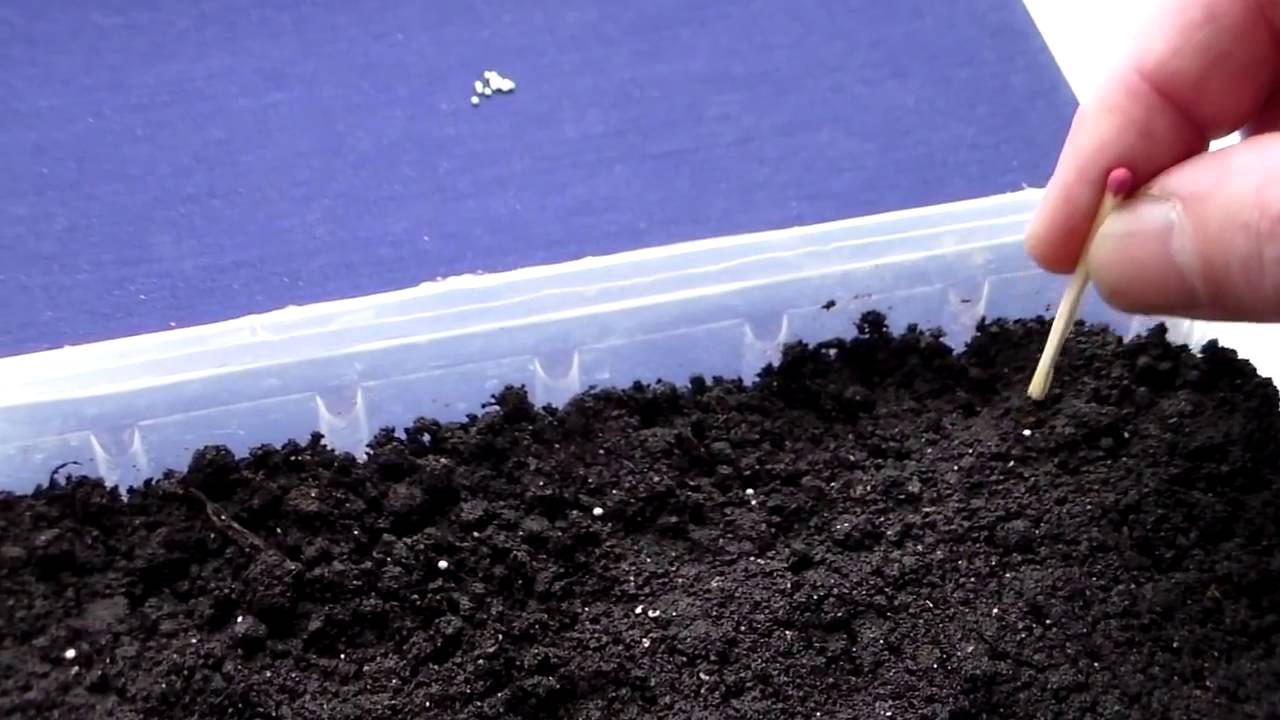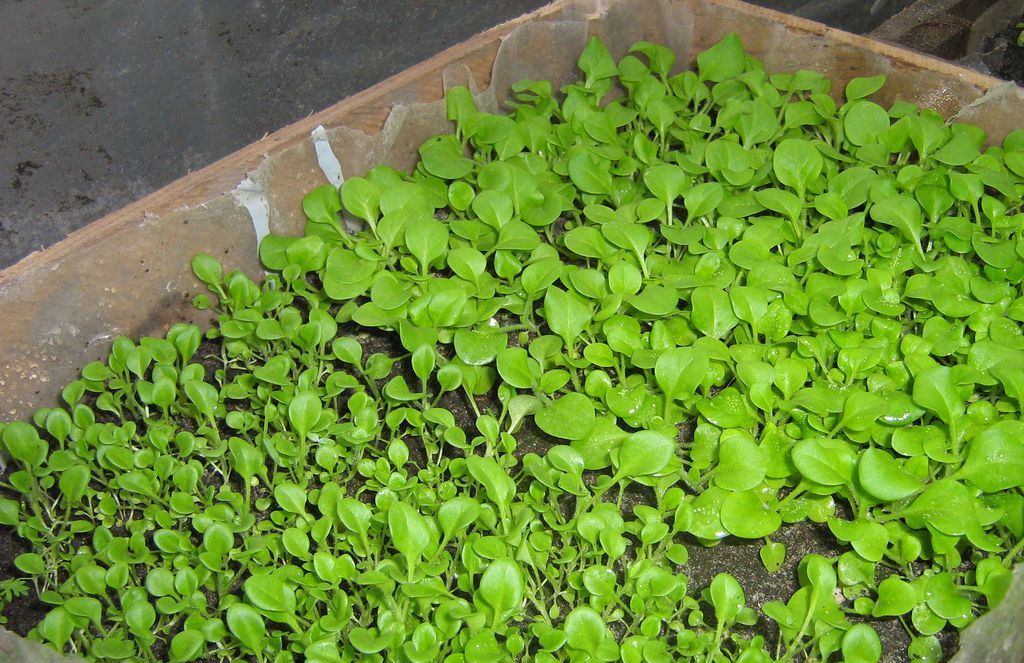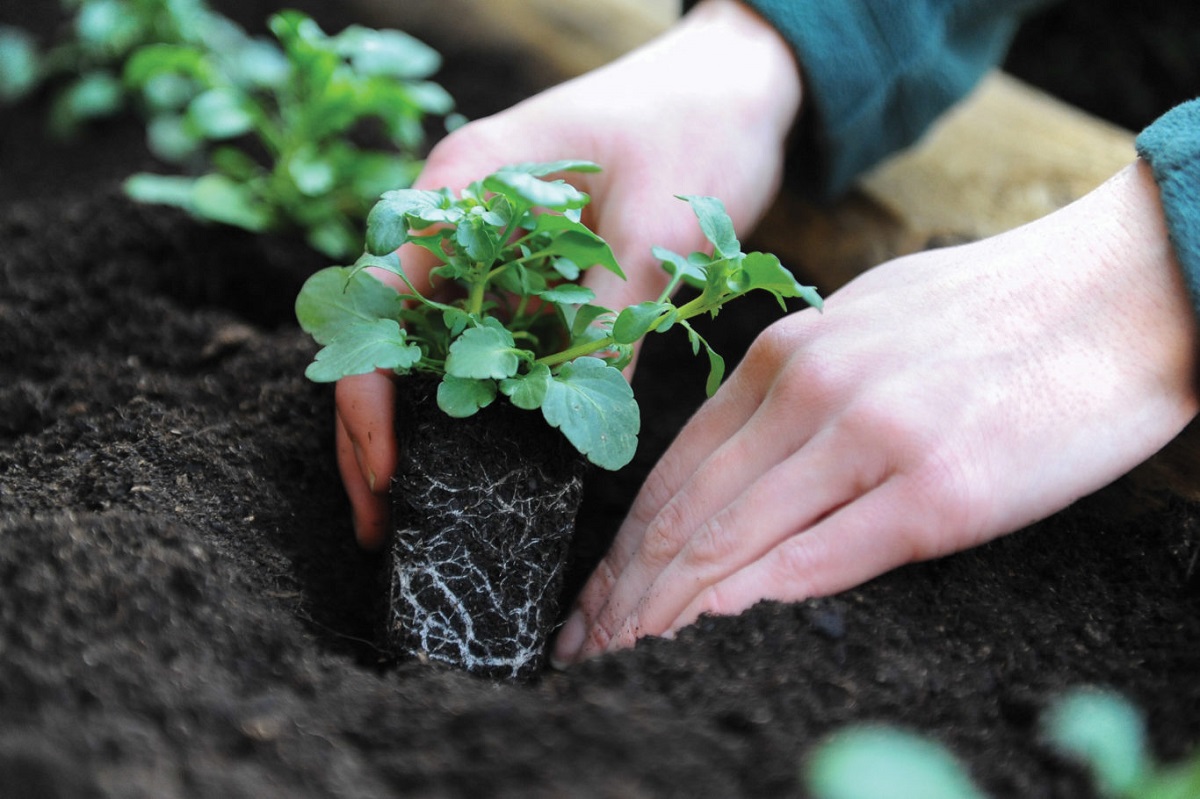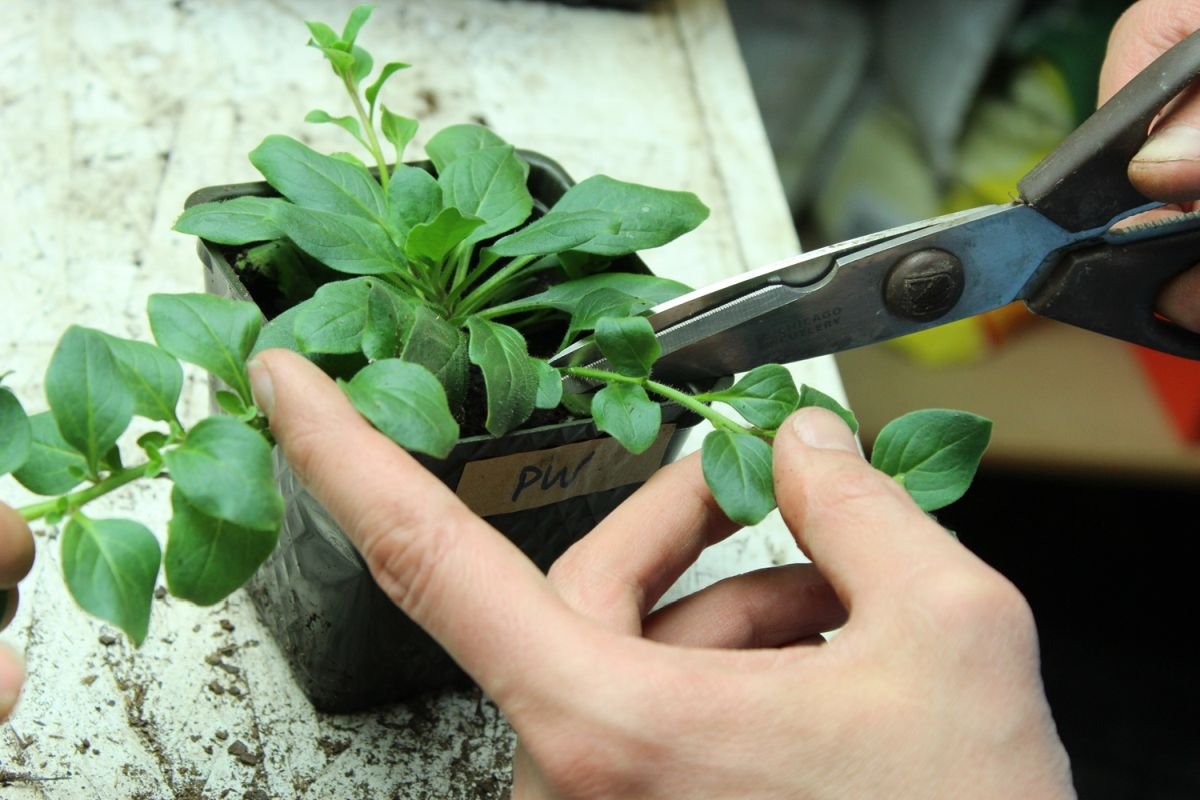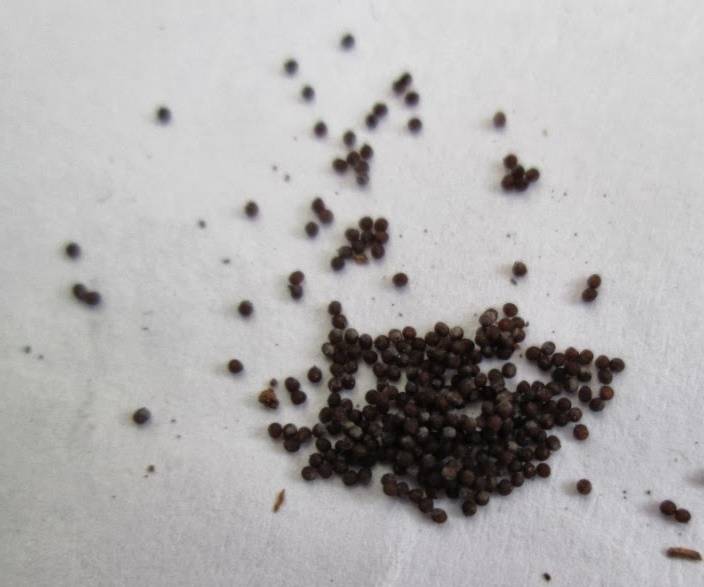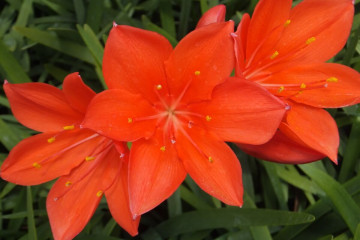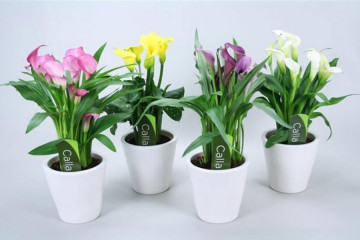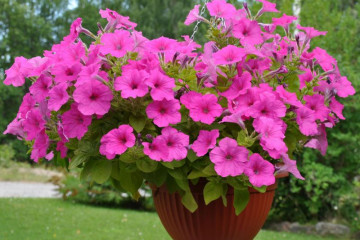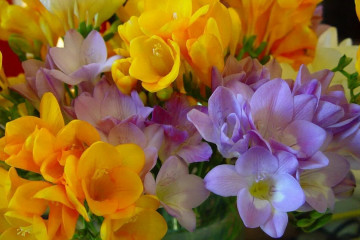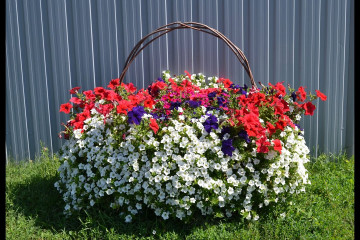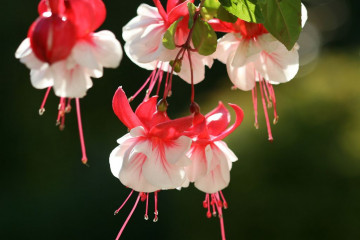Petunia care and cultivation at home
Content:
Petunia is popular due to the huge number of bred varieties with a variety of colors, shapes and sizes of flowers. It is widely used for landscaping and container gardening. This plant is used to decorate flower beds, gazebos, balconies, and terraces. Most varieties of petunias are hardy in adverse weather conditions. Knowing what petunia requires, care and cultivation turn into pleasure, and everyone can become the owner of such a flower.
Description
Petunia is a herbaceous or semi-shrub plant from the Solanaceae family. Depending on the species, it grows from 10 cm to 1 m, and the size of the flowers varies from 3 to 16 cm.
The first characteristic of the plant was given by Lamarck in 1793. He found it in a herbarium from Uruguay.
R. Vilmorin in 1843 combined all the varieties bred at that time under the general name of hybrid petunia (P. x hybrida). So the varieties of this plant are still called.
Petunia, planting and caring for it is not considered labor-intensive. However, there are varieties that are less resistant to adverse conditions. Therefore, when purchasing a flower, it is advisable to familiarize yourself with its care rules.
Growing from seeds
The average development time of this plant from sowing to flowering is 90 days. But you should still navigate according to a certain group to which the flower belongs. And also on the timing of disembarkation on the street.
- So, ampelous varieties are sown in the middle of winter. This allows them to grow long shoots by summer.
- Multiflora is planted in February, late-flowering petunias with large flowers in March.
- Dwarf varieties are also sown in late winter - early spring, as they bloom quickly.
Choice of capacity
Petunia can easily be transplanted, so it can be sown directly into containers or seed boxes. The depth of the container should be 6-7 cm.
If the containers have already been used before, then they must be cleaned and disinfected before planting. The containers must have a hole for draining excess water.
Soil and seed preparation
The soil for planting seeds should be rich in nutrients, light, neutral. A ready-made violet mixture, which is sold in garden stores, is suitable. Self-prepared soil includes: turf, peat and coarse sand.
A few days before planting, the soil is calcined or spilled with boiling water, treated with a solution of potassium permanganate.
Petunia seeds are very small and contain few nutrients. That is why granulated seeds are made for better germination. The disadvantage of such seed material is that its quality is not visible.
Planting seeds
This will require:
- seeds;
- soil;
- containers for planting;
- scoop, tweezers (the one for lenses is convenient);
- sprayer;
- water;
For a petunia plant, sowing seeds at home begins with the fact that expanded clay is placed on the bottom of the container.Then a layer of soil, which should be slightly crushed. The substrate is moistened with a spray bottle. Use tweezers to distribute seeds in containers. The planting material is slightly crumpled; it is sprayed. The top is covered with a glass lid or plastic bag. Sign the sowing date. Better not with a pen - it can wear off over time.
After planting, the containers are placed in a room with a temperature of about 24 ° C.
How to care for petunia seedlings
To get strong healthy seedlings of petunia, you need to follow certain rules: hardening, watering, lighting, feeding and loosening.
Temperature
To harden seedlings, the temperature is lowered to 20 ° C, then to 16 ° C. When the plants adapt well, nighttime temperatures can be reduced by another 2-3 degrees.
Watering
Petunia requires special attention in care when watering and maintaining air humidity. If poured or not ventilated for a long time, rot may develop and the plant will die. Therefore, water is often watered, but with a small amount of water.
You can water from a pallet or with a watering can, being careful not to get the leaves wet. This procedure should be performed in the morning or evening, when there is no direct sunlight.
Lighting
Petunias are light-loving plants. If, after diving, the shoots began to stretch out or they are pale and frail in appearance, then additional lighting is needed. On the south window, in very bright sun, it is recommended to shade delicate plants.
Top dressing
The first time the plants are fed 7-10 days after the dive. It is better to introduce complex and organic fertilizers. Top dressing of petunia seedlings is carried out weekly. In order not to burn it, fertilizers are diluted using half the recommended dose.
Open ground transplant
Grown petunias are planted outside after all spring frosts have passed. The transplant is carried out on a cloudy day so that the seedlings do not burn.
Step-by-step stages of transplant:
- Before this, the clod of earth is slightly dried. Then it will be easier to remove from the container.
- After the seedling was taken out of the container, trying not to damage the roots, the plant is transferred to the prepared hole.
- They cover it with earth and compact the soil around the shoot a little.
- Watering plantings.
The distance between seedlings of large-flowered petunias in the garden is observed at 20-25 cm. Small-flowered ones are planted 15-20 cm apart.
If you need petunia, which will be planted in a container in several pieces, then first they are distributed in the hole. And then the intervals are covered with soil. In this case, it is expected that there is a liter of soil per root.
After transplanting from home, add a thin layer of peat, last year's humus or sawdust. Thus, preventing rapid soil drying and crust formation.
Open ground is different from seedling substrate. It should be sandy loam soil, heavier, lower drainage than at home.
Most petunias prefer sun or light partial shade, open area. But, when planting young plants in open ground, they should be protected from the scorching sun for some time. For this purpose, use spandex or gauze folded 2-3 times.
Propagation by cuttings
When propagated by seeds, beautiful hybrids can lose their qualities. For example, a terry plant will have simple flowers. Also petunia may change the color of the petals. Therefore, cuttings are used. By this method, terry and ampelous petunias are propagated.
Young, healthy plants with favorite flowers are selected for the mother plants. If the lighting in the apartment is provided and the petunia grows well, then the cuttings can be taken throughout the year.
The soil is used the same as for seed propagation. Disinfected coarse sand or vermiculite is poured on top of it in a layer of 2-2.5 cm.
How to plant petunia with cuttings:
- cut off the tops with 4-6 leaves from the mother liquor;
- remove the lower leaves, leaving the 2 upper ones;
- halve the remaining leaf blades;
- place the cuttings in the ground at ¼ of their length;
- maintain the distance between seedlings - it should be about 2.5 cm;
- cover the container with glass or transparent film;
- put in the light, not in the scorching sun, and maintain the temperature at 20-25 ° C.
After planting, seedlings starting to take root are sprayed twice a day, ventilated. If mold has started, then it is removed, ventilation is increased and watering is reduced. Can be spilled with a weak solution of potassium permanganate.
When the roots have grown by 1.5 cm, the plant can be transplanted into separate pots.
Outdoor petunia care
You need to know the basic rules of how to care for a petunia so that it blooms profusely. For this, the most important thing is to carry out the following procedures in a timely manner: feeding, pinching, pruning.
Top dressing
A week after planting seedlings on the street, they begin to fertilize. First, feed with a lot of nitrogen is used. This will allow the petunia to grow many vegetative shoots.
After another couple of weeks, a complex fertilizer is applied for flowering plants. Potassium predominates in them. It is needed for budding and abundant flowering.
Pinching
By pinching the tops, the bush becomes more voluminous, blooms more amicably. The pinching is carried out several times:
- The first is when the plant has 5-7 leaves.
- The next one is needed when shoots reach 12-15 cm.
- Then pinch after 1 - 1.5 weeks, depending on the growth rate of the plant.
Pruning
Caring for a petunia during flowering involves pruning the shoots to stimulate the appearance of new flowers. And also, with the help of this process, the shape and height of the bush is set. For example, you can create a ball shape or arrange a cascade in a hanging basket.
To make the petunia lush and blooming, elongated and faded branches are removed when pruning. If the plant looks unsightly, then you can remove half of the shoot at once. When shortening the stem, one must not forget about the remaining side branches - they are also pruned.
Reasons why petunias do not bloom
For lush flowering, it is not enough to plant plants on time. There are a number of reasons why petunias do not bloom, what to do in this case:
- Nutrient imbalance. You should carefully read the instructions for use of fertilizers. Better not to report a little than to overdo it with chemistry.
- If the shoots have a bad, dull, thinned appearance, then, most likely, there is not enough sunlight.
- The wrong watering regime can also cause the buds to drop.
Seed collection
Basically, petunia seeds are harvested from single-color varieties. If hybrids are propagated in this way, then the children may differ from their parents.
To properly collect the seed, you need:
- Bring fruits with seeds indoors, where it is light and there is no draft.
- Open boxes on paper or paper towel.It is necessary to ensure that the seeds do not scatter to the sides. They are very small and can get lost.
- Collect the seed in paper and plastic bags. Eppendorf tubes can be used.
- Sign and place in a dark place to preserve the seeds.
Disease and pest control
Common pests of petunias are: aphids, whiteflies, thrips and spider mites. It is difficult for them to defeat a healthy plant outdoors. Rain, wind, cool night, ladybugs and birds keep them from spreading.
At home, petunia can die from these pests. To combat them, insecticides are used: Intavir, Konfidor, Aktaru. You can treat it with infusion of garlic or dandelion. As a prophylaxis - maintaining air humidity, spraying, periodic treatment with soapy foam (then be sure to rinse off!).
Among the diseases to which petunia flowers are exposed, black leg, gray rot and powdery mildew are more common. They arise as a result of improper care and weak plant immunity. To avoid this, you must:
- keep the interval between seedlings at least 2-3 cm;
- avoid waterlogging in cold air;
- use neutral soil.
If the plant is sick, treat it with a fungicide. For example, Fitosporin-M, Maxim are suitable.
The result of all of the above
Currently, a large number of varieties of petunias have been bred. This flower is considered a hardy, low-maintenance plant. However, there are varieties that are less resistant to adverse conditions. Therefore, when purchasing seeds of a petunia plant, how to plant correctly and when to sow, it is advisable to familiarize yourself in advance.
The average development time of this plant from sowing to flowering is 90 days. But you should still navigate according to a certain group to which the flower belongs. To obtain strong healthy seedlings of petunias, cultivation and care should include: hardening, watering, lighting, feeding and loosening.
Grown petunias are planted outside after all spring frosts have passed.
When propagated by seeds, hybrids can lose their qualities. Also petunia may change the color of the petals. Therefore, cuttings are used. By this method, terry and ampelous petunias are propagated.
Caring for adult petunias is not difficult, the main thing is to timely feed, pinch, trim. Basically, petunia seeds are harvested from single-color varieties. If hybrids are propagated in this way, then the children may differ from their parents.
Common pests of petunias are: aphids, whiteflies, thrips and spider mites. Among the diseases to which petunias are exposed, black leg and gray rot are more common.

